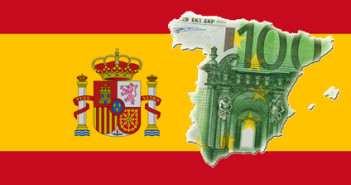Europe’s fourth largest economy had a strong start to the year. The Long Term Refinancing Operation by the ECB encouraged buying Spanish bonds, and Spain certainly seized the opportunity and satisfied nearly half the year’s funding needs in less than four months.
But since then, there is less demand for Spanish bonds, yields have gone up and Spain became the epicenter of the economic crisis. Here are Spain’s 5 big economic issues, that create a toxic mix.
Pain in Spain
Spain’s issues run deep and wide.
- High unemployment rate: Nearly 24% of Spaniards are unemployed. Even if this number is dismissed by some unaccounted for workers (or Economia Negra), this is still in inconceivable number. It partially results from the collapse of the construction sector.
- No bottom in housing: Home prices continue falling in Spain and no bottom is within reach. The stock of homes is estimated at around 5 years, and there are a lot of “white elephant” projects. Investment isn’t attractive in these conditions.
- Banking issues: The consolidation of the Spanish banking system is moving slowly and banks have a lot of construction related debt that is still in the shadows. A recent merger made Caixa Bank the largest bank in Spain, and this poses risk as a “too big to fail” bank, while still leaving a lot of business in the shadows. Without cleaning the banks, the
- Regional Tensions: Spain’s decentralized political system means that significant parts of government expenditure are managed by the 17 regional communities and are running deficits. Two large regions are in the limelight. Northeastern Catalonia is a relatively rich region with a significant cultural difference and also a high deficit. Who is to blame for the deficit? The debate cannot be detached from ethnic tensions, making any decision making problematic. Andalusia in the south is Spain’s largest region and a struggling one. It is currently controlled by the opposition PSOE party, also making every decision politically charged.
- Contracting Economy: Thanks to strong tourism, Spain managed to post some modest growth for a limited period of time. Spain’s economy turned negative when winter came. A contraction of 1.5% to 2% is on the cards for 2011. More austerity means even deeper contraction as seen in Greece.
Spain has a toxic combination of Portugal’s economic weakness together with Ireland’s real estate / banking issues.
The relatively new government suggested quite a few reforms, especially in the two-tiered labor market, and also decided on budget cuts.
On the other hand, it defied Brussels in the deficit target for 2012. The EU wanted 4.4%, and Spain’s PM suggested 5.8%. They compromised on 5.3% + tighter EU surveillance, but the markets lost a lot of trust in the process.
This article is part of the special report about the EUR/USD Deadlock. You can download it by joining the newsletter in the form below, which appears on any article on Forex Crunch.
